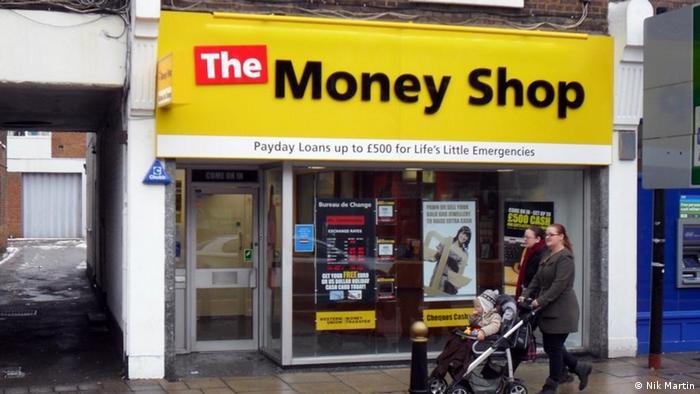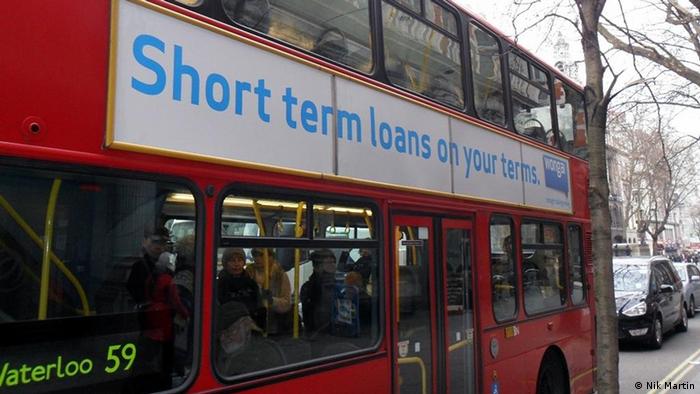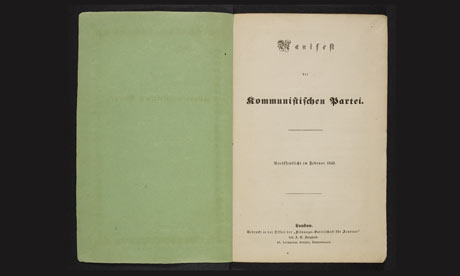紐約時報
By LANDON THOMAS Jr.
The lack of opportunity is feeding a mounting alienation and anger among young people across Europe, threatening to poison the aspirations of a generation.
![[cultolyvisual]](http://si.wsj.net/public/resources/images/EW-AL994_cultol_G_20120105112920.jpg) Max McClure / Courtesy Situations
Max McClure / Courtesy Situations 'Nowhereisland' in the High Arctic
It may become harder and harder to believe amid the increasing hype during the run-up to the Olympic Games, but there will be people who don't have much interest in the five-ring circus going on this summer. That group won't be confined to the beleaguered residents of the United Kingdom—spare a thought, too, for the poor husbands, wives, children and parents dragged to London by sports-mad relatives.
There is, however, one fortunate side effect of the fact that the Olympics have become an enormous commercial operation that would have been unrecognizable to the Ancient Greeks. It is that they are now surrounded by a huge range of diversions for those who cannot stand sports, or who simply fancy a change from watching people running about and throwing things. Music, dance, film, theater and literature all feature in what is grandly called the Cultural Olympiad (london2012.com/cultural-olympiad), but one of the most interesting and notable components is in the field of visual arts.
Andy Moore Imagineer Director Jane Hytch steers 'Lady Godiva.'
This reflects the fact that art is a major draw, not only for visitors to Britain, and London in particular, but for its citizens: more people visit museums and galleries each year than attend league football matches, the nation's most popular sport. In part, that is down to the strength of the great national and provincial collections, and, in recent years, to the growth of blockbuster exhibitions. But it is also evident in the popularity of British contemporary art.
It is this—the kind of large, specially commissioned installation work featured in biennales and public spaces—which for the most part dominates the culmination of the four-year Cultural Olympiad. Under the title "Artists Taking the Lead," and with a total budget of £5.4 million, each region or, in the case of Scotland, Wales and Northern Ireland, nation, of the U.K. has selected a project to commemorate the Games. The projects exhibit all the virtues and vices, range and unpredictability of contemporary art—and, in some cases, may provoke the public incomprehensibility that often greets it.
Angela Catlin Craig Coulthard on the site of 'Forest Pitch.'
More on Arts at the Olympics
Scotland's selection is the one that has the closest connection with sports, but also typifies the whimsy and playfulness prevalent in current work, as well as an interest in environment and landscape shared with many of the other projects. The artist Craig Coulthard plans to level an area of forest in the Scottish Borders and turn it into a football pitch where, on July 21, two matches will be played between teams made up of recent British citizens and nationalized residents (forestpitch.org). Thereafter, the playing area will be allowed to revert to nature.
Other exhibitions also concentrate on the elements and the natural world. One of the most spectacular—if it achieves its objectives—ought to be the gigantic column of steam that is being created at Birkenhead, in northwest England, and is intended to be visible from as far as 100 kilometers away. This is the work of Anthony McCall, an Anglo-American artist who began as a filmmaker and whose subsequent practice has concentrated on exploring fire and light.
Perhaps even more ambitious is "Nowhereisland" (nowhereisland.org), which has been created by Alex Hartley. A meditation on national identity, climate change and the environment, it consists of a floating island dragged from the Svalbard archipelago in the High Arctic to the coast of southwest England. Mr. Hartley is inviting people to become citizens of this imagined territory (so far, more than 4,000 people had signed up) and has also created a program of videos, texts and other work inspired by the project and presented by "Resident Thinkers," to run throughout the year.
Ian Conroy A hot water bottle with a knitted cover, one of the thousands of donated objects that will form part of Brian Irvine and John McIlduff's project Nest.
Other work includes public participation—including the construction of a boat in southeast England, a walk in the Norfolk landscape and a warehouse of personal possessions and a new musical work in Northern Ireland. Not all the plans for public involvement have gone smoothly, though; Martin Creed's intention to have as many bells as possible rung across the country for three minutes at 8 a.m. on the opening day of the Games (www.allthebells.com) has run into difficulties with church bell ringers, who point out that it is impracticable to ring church bells "quickly and loudly," as his specification for the work (which is officially called "Work No. 1197," since Mr. Creed numbers all his projects) demands.
Judging by the previous success of events such as "The Sultan's Elephant," which was staged in London six years ago, I imagine that one of the most popular works will be the contribution of the West Midlands, a gigantic puppet of Lady Godiva (www.imagineerproductions.co.uk) that will eventually make its way to London.
For those who prefer a more traditional setting for their contemporary arts, the Tate Modern is staging a major retrospective of Damien Hirst's work (April 4- Sept. 9), while Tracey Emin, another enfant terrible from the "Young British Artists"—though she is now in eminently respectable middle age and professor of drawing at the Royal Academy—has a retrospective in her hometown of Margate (May 26-Sept. 23). And the National Portrait Gallery will be hosting a Lucian Freud retrospective (Feb. 9-May 27).
There ought to be plenty to divert those who find themselves in Britain this summer, but are more devoted to the Muses than the athletic inheritance that the Greeks handed down to the modern world. After all, Niké, the goddess of victory whose name will surely be one of the most prominent at the Games this summer, never managed to get a seat on Olympus, while Athene, goddess of the arts, had a secure berth there.
Carrying the Olympic Torch
Music, dance, film, theater and literature all feature in the London 2012 Cultural Olympiad, but one of the most interesting and notable components of the program is in the field of visual arts. •
All of Britain Will Be a Stage •All of Britain Will Be a Stage
Paradoxically, though this Olympic year is going to be a bumper year for the performing arts in the U.K., the anticipated huge crowds in London may well mean that the arts fans who profit the most will be those who live outside the capital.
While dozens of plays, operas and other stagings will be linked to the 2012 Games, the labels are tricky to untangle. The Cultural Olympiad, in fact, refers mostly to community projects that will be completed by the time the Olympics and Paralympics end. And the Danny Boyle-directed Opening Ceremony, a production that will be seen by a gigantic world-wide TV audience and recently had its budget doubled to £80 million, weirdly doesn't come under the umbrella of "culture."
Angelos Giotopoulos 'Bamboo Blues' by Pina Bausch, part of World Cities 2012 season, is at Sadler's Wells and the Barbican.
The aspect of the Cultural Olympics (total budget: £97.6 million) we are most interested in, however, is the London 2012 Festival (festival.london2012.com), which will feature a program of mainly new works for the theater, concert hall, opera house and dance stage, running from June 21 to Sept. 9. (Confusingly, not all the venues are in London—but the Games are there, so the festival bears the capital's name.) Though many—perhaps most—of the performance events are new commissions, some, like the Globe's plays (except for a new "Henry V") and a good many of the exhibitions, are a matter of re-christening already-scheduled events.
Shivers went through the London cultural establishment last year when the Olympic Delivery Authority urged the city's residents not to use the Underground during the Games, to help reduce traffic on an already stressed transportation system. The West End was identified as one of the hot spots. Although one or two theaters in the area are "going dark" during the Olympics, or giving their casts and crews their holidays then, Society of London Theatre president Mark Rubinstein is optimistic. "We know things will be different, and that we will have to work harder," he said, but added that he is confident of pulling in a new audience of people who have come for the Games but "know that you haven't seen London if you haven't seen a West End show." The big event: Cast members from all of London's musicals will perform in "West End Live" at Trafalgar Square June 23.
More on Arts at the Olympics
Ruth Mackenzie, culture director of the Cultural Olympiad, offered a few of the top items on her list, including Handspring Puppet Company's "Crow," in which the British outpost of the South African troupe bring Ted Hughes's poetic masterpiece to a stage yet to be determined (June 21-Sept. 9). "Another hot tip," she says, "would be the commission for [Scottish composer] James MacMillan at Coventry Cathedral" (June 23).
Following Ms. Mackenzie's lead, here are my recommendations. The Royal Shakespeare Company has specially commissioned a stunning series of Shakespeare plays, adding to the nomenclatural fun by incorporating it in a "World Shakespeare Festival 2012" (worldshakespearefestival.org.uk), starting on the bard's April 23 birthday. "What Country Friends Is This?" is the RSC's take on the shipwreck trilogy—"The Comedy of Errors," "Twelfth Night" and "The Tempest." Other hot tickets will be the Iraqi National Theatre's "Romeo and Juliet in Baghdad" at Swan Theatre in Stratford-upon-Avon (April 26-May 5) and London's Riverside Studios (June 28-30), Calixto Beito's "Forests" at Old Rep Theatre in Birmingham (Aug. 31-Sept. 15) and the Wooster Group's "Troilus and Cressida" in Stratford-upon-Avon (Aug. 3-18). Sam Mendes, Rupert Goold and other luminaries will also mount special productions for BBC TV and Radio.
There's a Paralympic aspect to the London Festival, too, including a dance theater piece, "Ménage à Trois," at Southbank Centre (Sept. 1-9), which explores performer Claire Cunningham's 20-year relationship with her crutches. For children and consenting grown-ups, there's Punchdrunk's on-stage "Dr. Who" adventure, "The Crash of the Elysium," in Ipswich (June 15-July 8; ip-art.com).
Lovers of contemporary opera will relish Damon Albarn's "Dr. Dee" at the English National Opera (June 25-July 7; eno.org). Like the Punchdrunk production, this is a co-commission with—and already seen at—the Manchester International Festival. "Dr. Dee" consists of pop vocals plus "contemporary orchestral music played on 16th-century period instruments," in a staging by Rufus Norris.
"We are passionate about offering once-in-a-lifetime opportunities to see work and artists who have changed the way we think about the world and/or about art," Ms. Mackenzie says. "Pina Bausch and Robert Wilson being two obvious examples. But the Beethoven/Boulez cycle at the Proms by [Daniel] Barenboim's East/West Divan and the George Benjamin weekend at the Southbank [May 12-13] also being good examples."
The tribute to Ms. Bausch, the late German performer and choreographer, "Tanztheater Wuppertal Pina Bausch: World Cities 2012," is at Sadler's Wells (sadlerswells.com) June 6-July 9, while Mr. Wilson directs Philip Glass's four-act, five-hour opera "Einstein on the Beach" at the Barbican, May 4-13 (ticket holders are encouraged to leave their seats when called to by nature—or thirst or hunger). With choreography by Lucinda Childs, it might well be true that this rarely performed piece is "one of the greatest artistic achievements of the 20th century." Mr. Barenboim is conducting his orchestra in the complete cycle of Beethoven Symphonies at this summer's BBC Proms (bbc.co.uk/proms), culminating in a performance of the 9th Symphony on July 27, the Olympics' opening day. The concerts will also feature works by Pierre Boulez.
The lion's share of festival funding for all this comes from the Lottery, plus the Arts Council and co-funding organizations; many programs are still to be announced. But this so-very-typical British way of pulling last-minute rabbits out of mysteriously acquired hats will, I've no doubt, result in some remarkable performances.
Write to Paul Levy at wsje.weekend@wsj.com
Olympic Posters Make a Leap
![[cultolyside]](http://si.wsj.net/public/resources/images/EW-AL999_cultol_DV_20120105115851.jpg) London 2012
London 2012 Rachel Whiteread 'LOndOn 2O12.'
More on Arts at the Olympics
![[cultolyside]](http://si.wsj.net/public/resources/images/EW-AM000_cultol_DV_20120105120007.jpg) London 2012
London 2012 Howard Hodgkin 'Swimming.'
A dozen of Britain's leading artists were invited to design official posters for the Olympics and Paralympics, and some of these are so fine that art lovers with deep pockets will want to invest in a boxed set of the complete, signed limited editions from Counter Editions (wwwcountereditions.com/london2012), at £11,805. The rest of us will have to make do with those available at £7 each from shop.london2012.com, or a trip to the Tate Britain, where they're all on display in a free exhibition that runs from now until the London 2012 Festival ends Sept. 9.
Some of the posters rise well above the level of something to tack on a student's dormitory wall, which is a tribute to the taste of the mystery commissioners (their identities are concealed somewhere in the labyrinth of Olympics-related committees).
Chris Ofili's "For the Unknown Runner" has a classical urn containing one of his generic African figures, whose gender is cleverly made ambiguous by a thick black line. Rachel Whiteread's "LOndOn 2O12" plays on the five Olympic circles in a random and colorful way.
Tracey Emin's "Birds 2012," depicting two small birds on a branch kissing, looks too much like Mary Poppins hanging on to her open umbrella, and bears the scrawled caption, "You inspire me with Your determination And I Love You." It's the most expensive of the limited editions at £1,800, and, I'd say, is the least interesting.
Michael Craig-Martin's wonderfully colored blue stopwatch, done with his characteristic black-outlined precision, is simply called "GO." Howard Hodgkin's "Swimming" is a masterclass in blue (disclosure: both are good friends of mine). Most of the artists commissioned have contributed images that are typical of their work. But Mr. Hodgkin has done something remarkable, in that his picture appears to be abstract swirls of blue laid on with a heavily loaded, very wide brush—but from the lowest suggestion of a wave emerges the dark form of the heroic swimmer.
—Paul Levy






 Breeches were known as inexpressibles
Breeches were known as inexpressibles  Body snatchers like Burke and Hare were known as Resurrection Men
Body snatchers like Burke and Hare were known as Resurrection Men  Stockings were known as vampers
Stockings were known as vampers 



![[cultolyvisual]](http://si.wsj.net/public/resources/images/EW-AL994_cultol_G_20120105112920.jpg) Max McClure / Courtesy Situations
Max McClure / Courtesy Situations 







![[cultolyside]](http://si.wsj.net/public/resources/images/EW-AL999_cultol_DV_20120105115851.jpg) London 2012
London 2012 ![[cultolyside]](http://si.wsj.net/public/resources/images/EW-AM000_cultol_DV_20120105120007.jpg) London 2012
London 2012 









